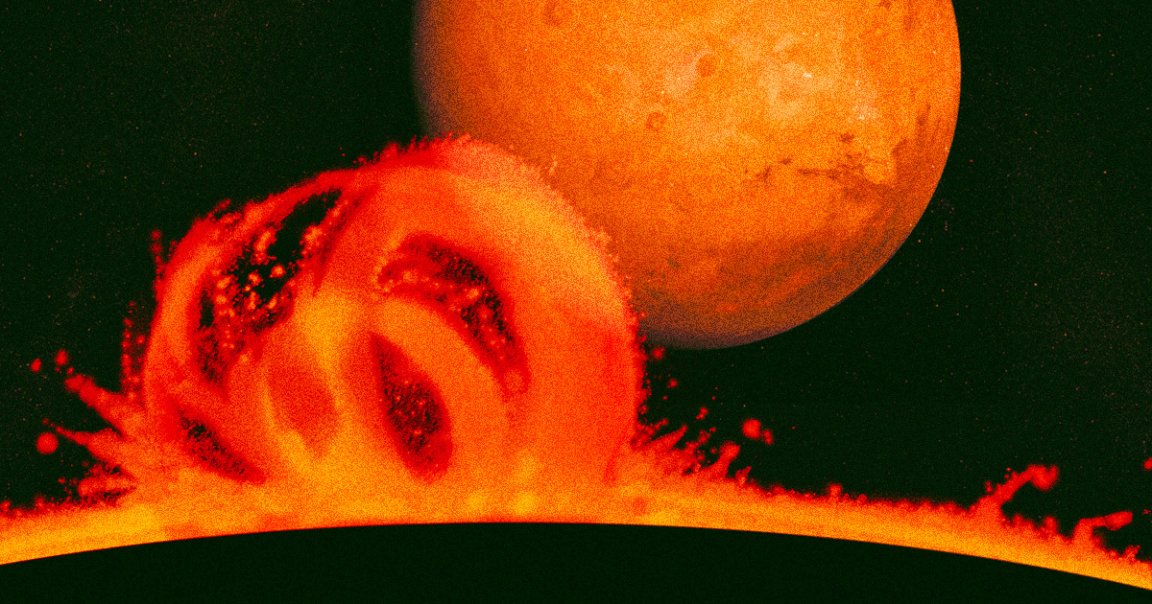
Toasty Times
The Sun is ramping up, which could be a boon for our hopes of exploring Mars on foot — depending on what scientists find. In preparation for a potential crewed mission to the Red Planet, NASA scientists will be closely watching how the Sun’s peak of volatile activity affects the Martian surface and, by extension, what that means for any astronauts traversing it.
Our star semi-regularly spews its plasma-y innards into space during events like solar flares and coronal mass ejections. But as the Sun approaches its solar maximum, a peak of solar activity that occurs around every 11 years, these events occur far more often, sometimes happening in such brutal succession that they create what’s known as a solar storm.
These outbursts pose their own quandaries for our planet, which thankfully has a very robust atmosphere. But on Mars, where there’s only a thin remnant of one, its barren surface is left virtually unshielded to the Sun’s radiation, which means any human astronauts there would be left exposed, too. Exactly how dangerous this would be, however, remains unclear.
“For humans and assets on the Martian surface, we don’t have a solid handle on what the effect is from radiation during solar activity,” said Shannon Curry of the University of Colorado Boulder Laboratory for Atmospheric and Space Physics in a NASA release.
“I’d actually love to see the ‘big one’ at Mars this year — a large event that we can study to understand solar radiation better before astronauts go to Mars.”
Tag Team
To gauge the Sun’s toll on the surface during this period, scientists will be relying on two key sources of data. One is NASA’s Curiosity rover, with its indispensable Radiation Assessment Detector (RAD) instrument that measures high-energy radiation on the planet’s surface.
And as the space agency’s eyes in the skies is the Mars Atmosphere and Volatile EvolutioN (MAVEN) orbiter, which monitors radiation and solar particles. While those capabilities allow MAVEN to detect solar storms, it can’t paint a full picture on its own. Instead, with RAD, it can serve as an early warning system that lets the rover’s team know when to look for changes in the instrument’s data. And voilà: we’ll know exactly what’s going down there when a solar storm hits.
“You can have a million particles with low energy or 10 particles with extremely high energy,” said RAD principal investigator Don Hassler of the Boulder, Colorado, of the Southwest Research Institute in Colorado. “While MAVEN’s instruments are more sensitive to lower-energy ones, RAD is the only instrument capable of seeing the high-energy ones that make it through the atmosphere to the surface, where astronauts would be.”
More on Mars: Orbiter Spots “Spiders” on Surface of Mars